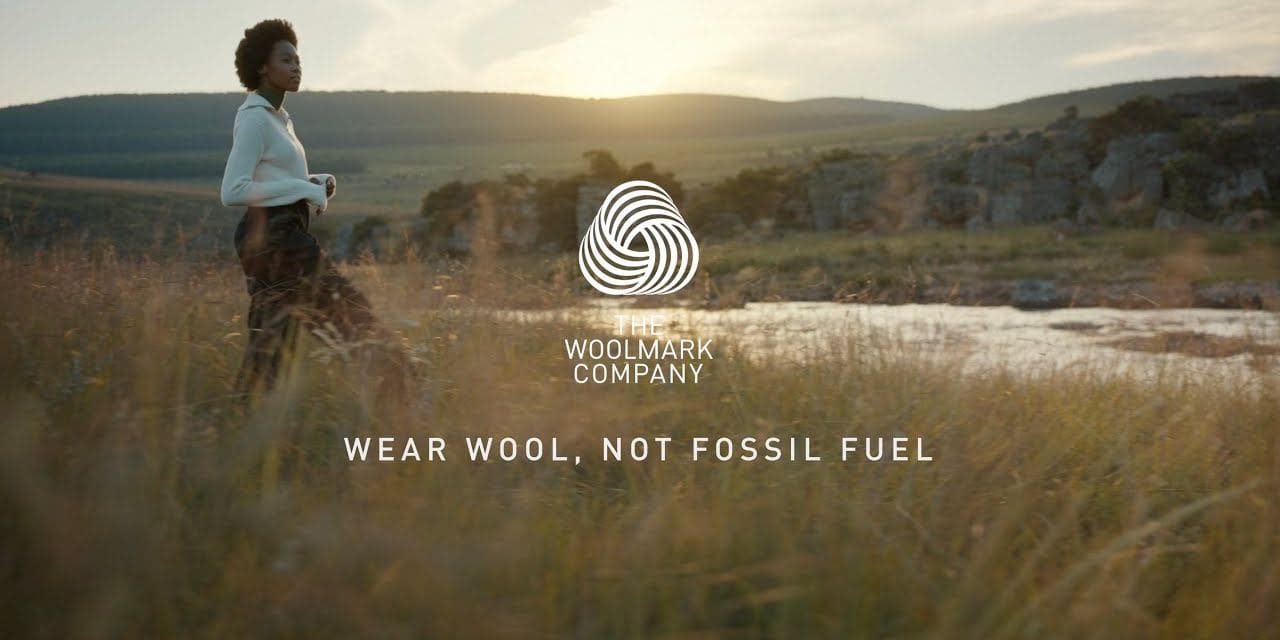Wear Wool, Not Fossil Fuel is the name of a new worldwide campaign that The Woolmark Company initiated to inform customers about the hidden environmental impacts of synthetic fibers and how selecting natural fibers like wool can help in minimizing the negative impact of fashion.
The ecologically conscious campaign uses a number of striking visuals to highlight the connection between clothes made of synthetic fibers and the crude oil utilized in their production.
The launch is centered on a 60-second hero film that depicts people attempting to escape an oil-filled swimming pool. This idea came from the realization that synthetic clothing requires roughly 350 million barrels of crude oil annually, or enough to fill an Olympic-sized swimming pool every 25 minutes.
The movie is accompanied by striking anamorphic digital out-of-home (DOOH) messaging in iconic locations like London’s Piccadilly Circus and New York’s Times Square, as well as a global out-of-home (OOH) campaign, a partnership with We Transfer, digital and social touch points, and a micro site that serves as “a one-stop-shop to understand the scientific evidence behind the benefits of choosing wool over synthetic fibers.”
John Roberts, Managing Director of The Woolmark Company, said that 73% of all apparel will be created from synthetic fibers that are directly generated from fossil fuels in just ten years. It is impossible to undervalue the influence that these clothing have both throughout their lives and at the end of it. According to some estimates, washing alone releases enough micro fibres into wastewater each year to fill 50 billion plastic bottles.
Roberts said that they know that Merino wool does not add to micro plastic pollution since science has demonstrated that wool fibers disintegrate in both terrestrial and aquatic settings. According to studies, wool clothing is among the oldest in closets and has one of the highest rates of reuse, donation, recycling, and end-of-life commercial viability. These reasons alone show how crucial it is to switch to a circular, slow fashion model to wear clothing made of natural fibers like Merino wool.
The campaign video was developed and created by 20 something, Park Village, and Studio Birthplace, whose award-winning portfolio includes most recently produced work for Greenpeace UK entitled “Waste minster: A Downing Street Disaster” which won Cannes Lions and D&AD.
Fran Docx, Strategy Partner at 20 something, said that in 1980, their closets were stocked with organic fabrics like cotton, wool, and cashmere. 60% of the market was made up of these natural fibers, considerably outpacing the comparatively recent polyester and polyamide substitutes. What resides in our closets has undergone a radical change as a result of the emergence of rapid fashion, Instagram outfit culture, and accelerated consumerism.
We hardly ever draw a larger ecological connection between clothing, the fibers used to produce it, and its environmental impact. In our collaboration with The Woolmark Company, we hope to solve this and promote natural fibers as viable alternatives to synthetic materials.
While more than one-third of customers worldwide said they would be ready to pay extra for sustainability, research by The Woolmark Company reveals that fiber consideration is completely absent from the purchasing process.

